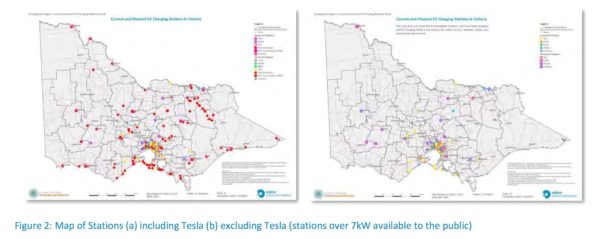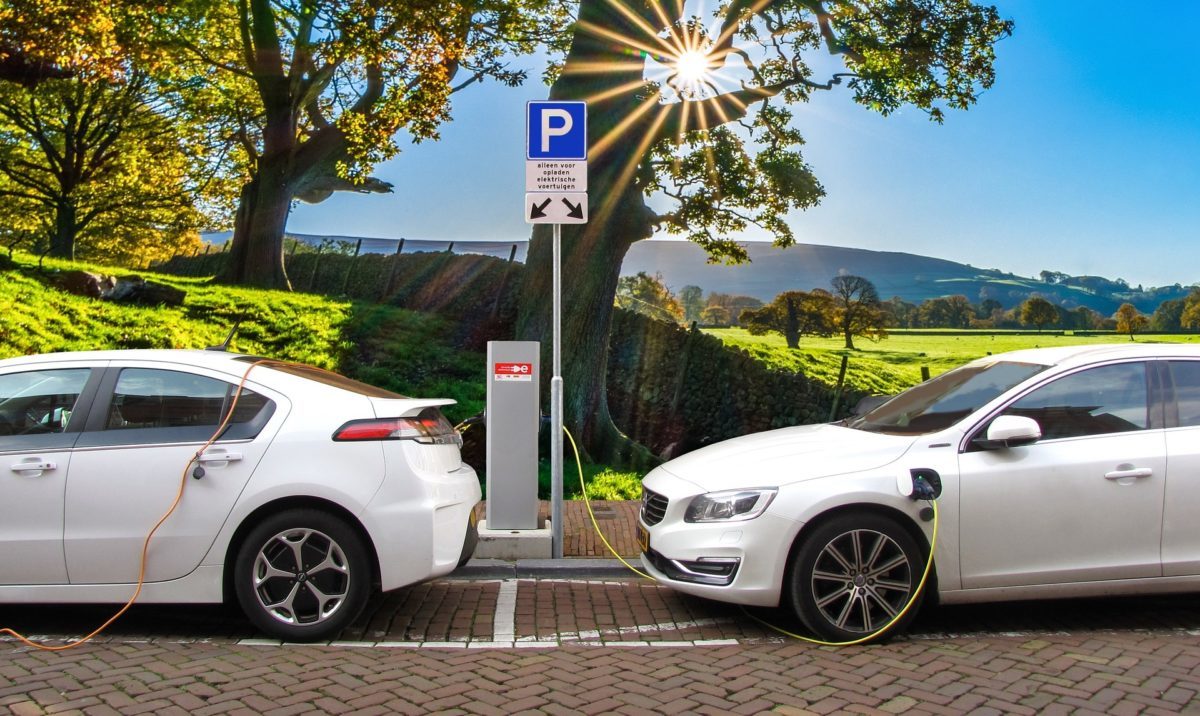A new report (Report) by Ndevr Environmental and supported by the Central Victorian Greenhouse Alliance (CVGA) outlines a potential Victoria-wide EV charging network.
The CVGA, consisting of 43 rural and regional councils, 12 metropolitan councils, five greenhouse alliances, the Victorian Government and the Electric Vehicle Council, tapped Ndevr Environmental to find ways to roll-out a more balanced EV charging network.
You can have any EV you want, as long as it’s a Tesla
One of the Report’s key findings is a gap in the charging infrastructure across regional Victoria (VIC). The gap is caused by significant infrastructural investment from Tesla to support its customers, leaving owners of other EV brands in the lurch.

Image: Central Victorian Greenhouse Alliance
Monkey See Monkey Do
Another key insight provided in this Report is the efficacy in following in the footsteps of other large-scale public charging infrastructure installations. Analysis of previous case studies around Australia and the world revealed two competing schools of thought: To charge or not to charge, which is to say, whether charging should be free or not. The City of Moreland in Melbourne believes free charging will help to boost the uptake of EVs, while others believe it will prove difficult to start charging customers down the line after they’ve enjoyed a freebie.
Speed or Endurance?
Case study analysis also revealed that a large network requires a cocktail of charging stations. Along major highways, users prefer ultra-rapid chargers while in and around towns less powerful chargers work better as long as there are a lot of them. This latter experience was felt in New Zealand when, in what must’ve been a welcome break for local sheep, many Kiwis had to queue for public charging and thus advised a denser network of sites around town even if the charge is slower.
The True Cost
Considering the as yet low penetration of EVs around Australia, the financial case for a large-scale charging network is not exactly foolproof. After all, revenue depends on EV users using the chargers. But, of course, these numbers will rise. The real cost of the large-scale charging network is the cost of not doing it. This is to say, the Australian Renewable Energy Agency (ARENA) estimates that even a moderate uptake of EVs by 2030 would save VIC $12.8 million and health costs and 600,000 tonnes of greenhouse gas emissions.
AC/DC
It seems almost un-Australian to make us choose between the two, but the Report provides a cost-benefit analysis on two rollout options, the 25-50 kW DC and the 7 KW AC.

Ultimately, the Report recommends a 25-50 kW DC networked charging infrastructure rollout for regional connectivity. This is in part to counter the market dominance of Tesla, as non-Tesla drivers currently have no fast-charging options in regional VIC. Although, the Report also recommends Councils take it upon themselves to rollout additional AC charging options at low cost.
There are, of course, hurdles to jump in the road to large-scale rollout, including:
- uncertainty regarding the role of local government;
- access to funds;
- confidence in the business case;
- uncertainty about site selection;
- concern about whether network infrastructure is available to power the charging stations;
- and a knowledge gap about the infrastructure needed for a network of EV charging stations.
However, the Report’s authors maintain that no single hindrance, nor their combination, is enough to quash the strength of the case for large-scale rollout.
This content is protected by copyright and may not be reused. If you want to cooperate with us and would like to reuse some of our content, please contact: editors@pv-magazine.com.









By submitting this form you agree to pv magazine using your data for the purposes of publishing your comment.
Your personal data will only be disclosed or otherwise transmitted to third parties for the purposes of spam filtering or if this is necessary for technical maintenance of the website. Any other transfer to third parties will not take place unless this is justified on the basis of applicable data protection regulations or if pv magazine is legally obliged to do so.
You may revoke this consent at any time with effect for the future, in which case your personal data will be deleted immediately. Otherwise, your data will be deleted if pv magazine has processed your request or the purpose of data storage is fulfilled.
Further information on data privacy can be found in our Data Protection Policy.